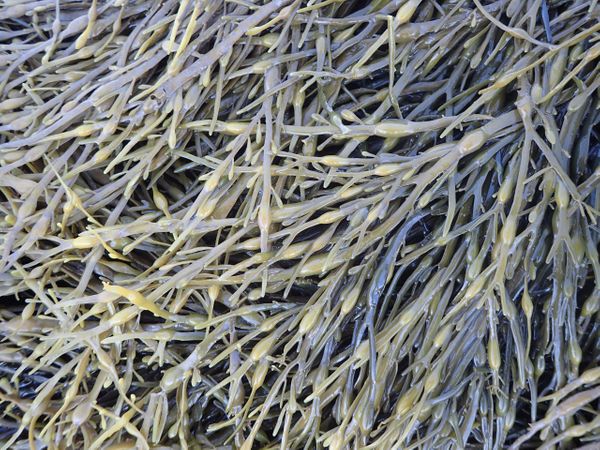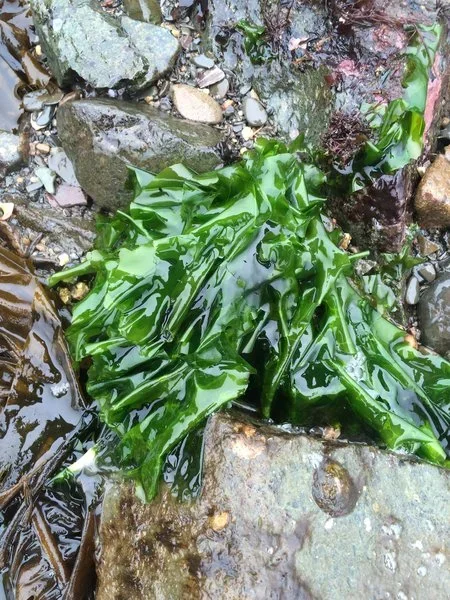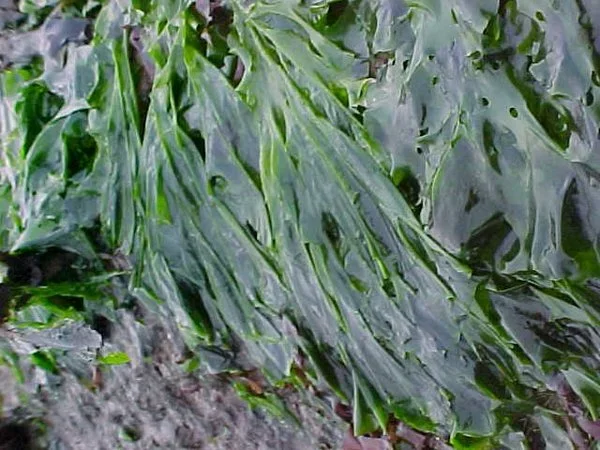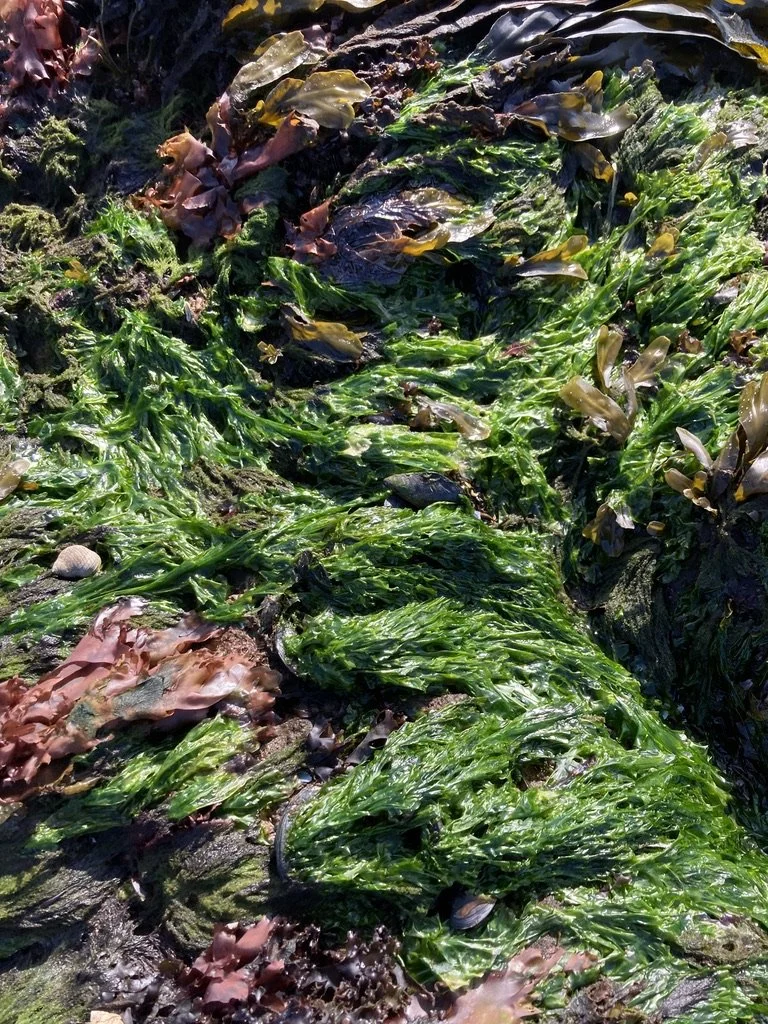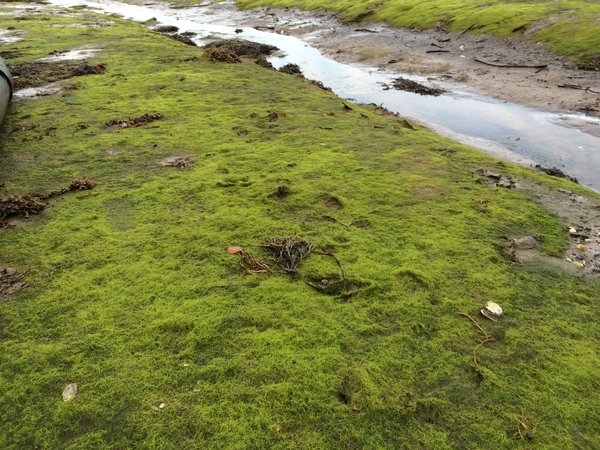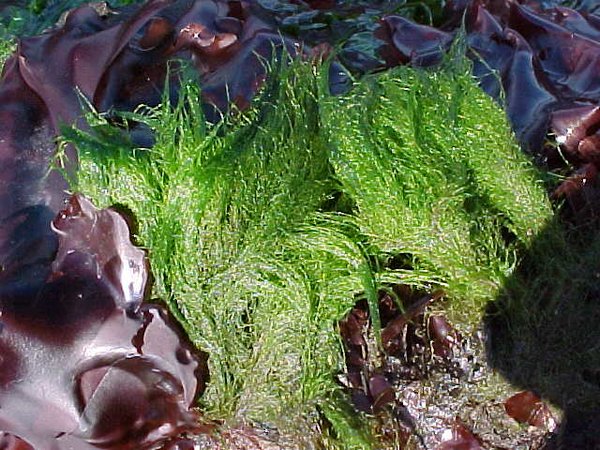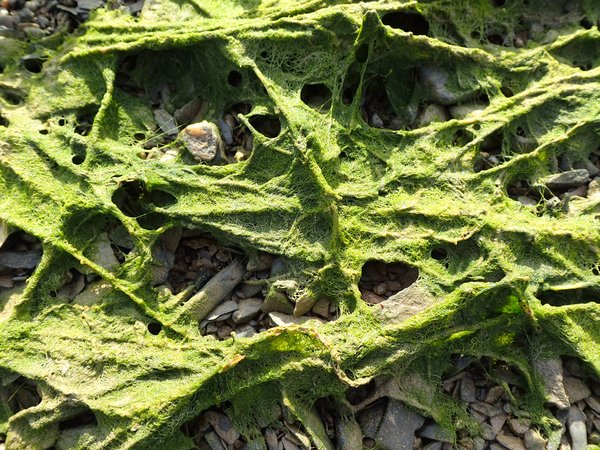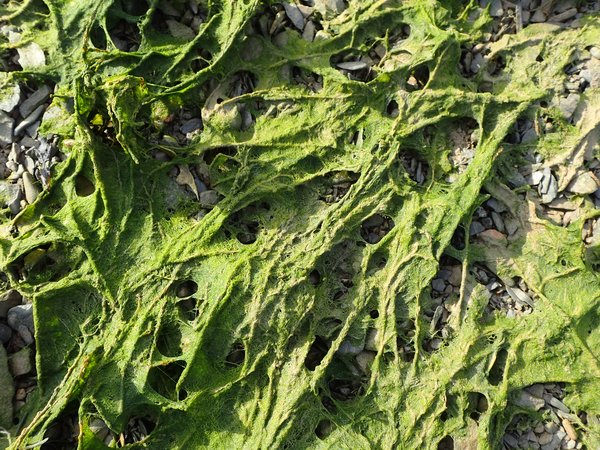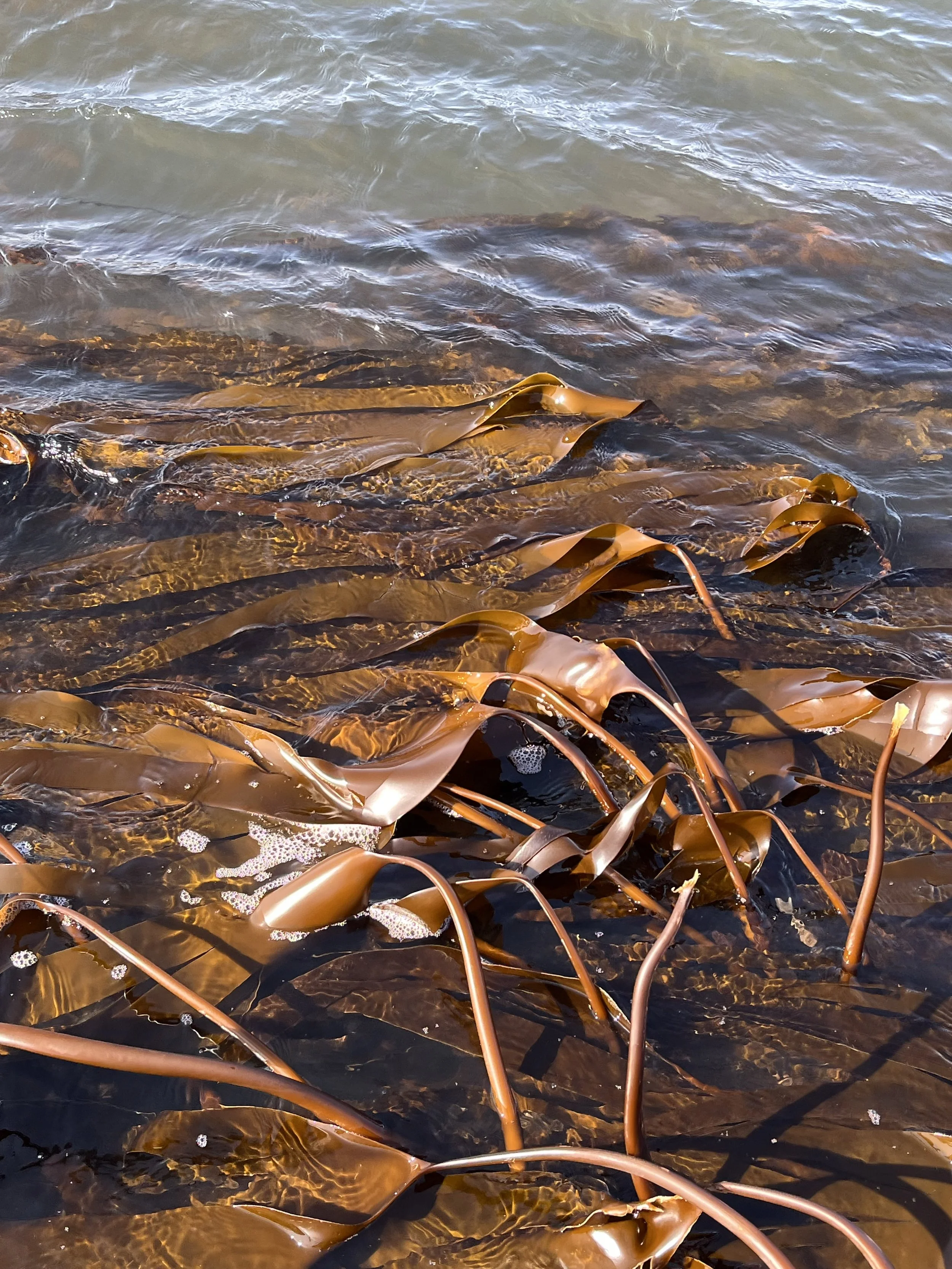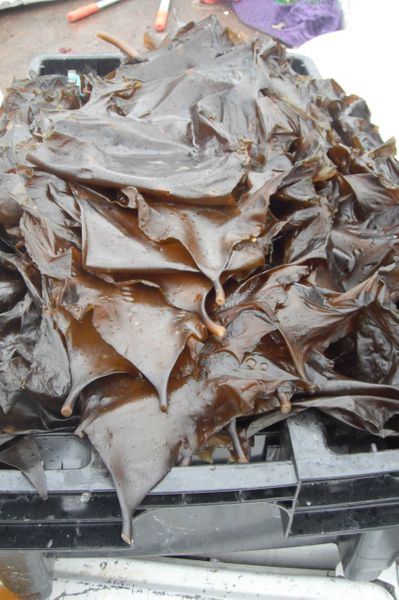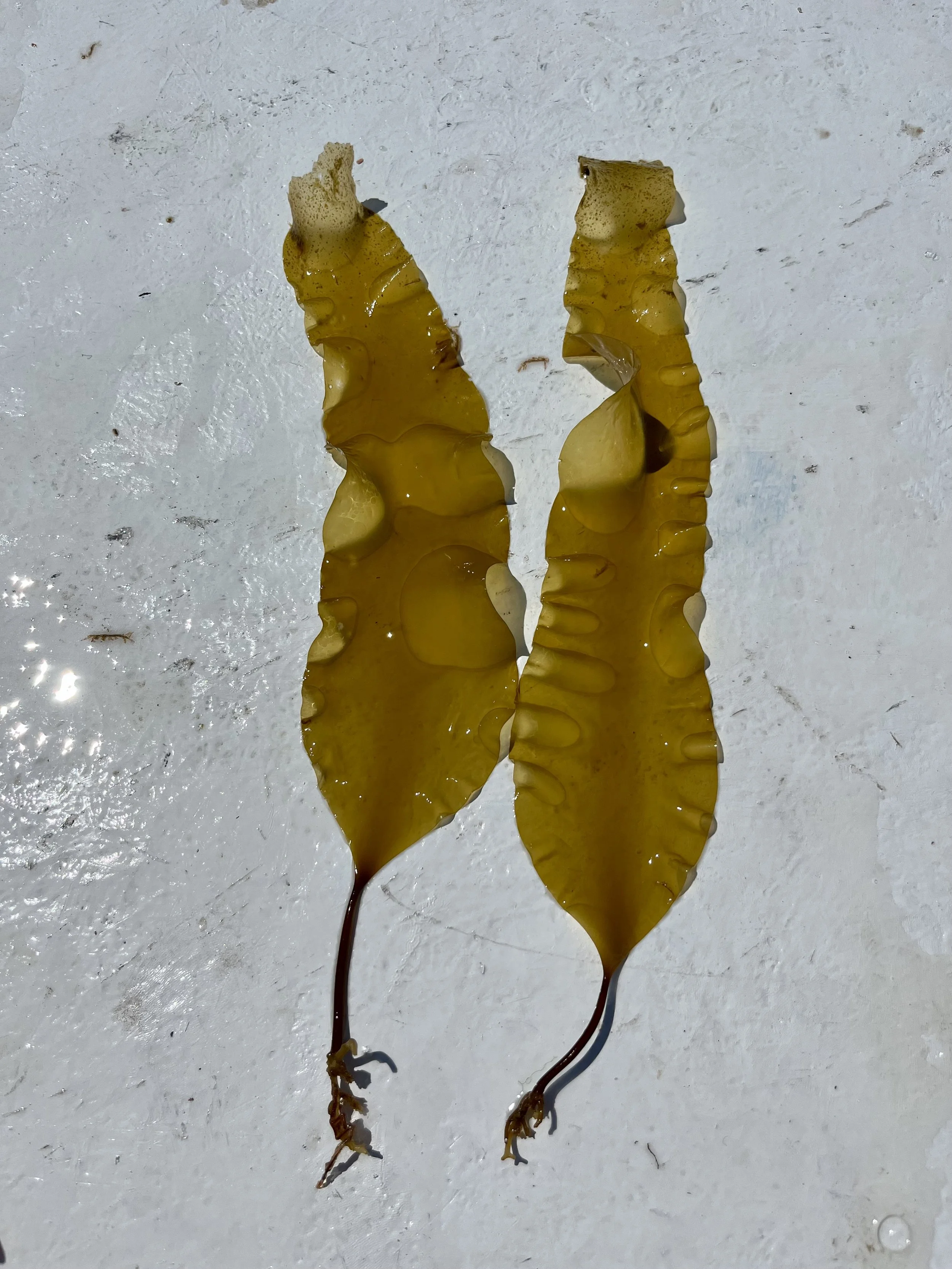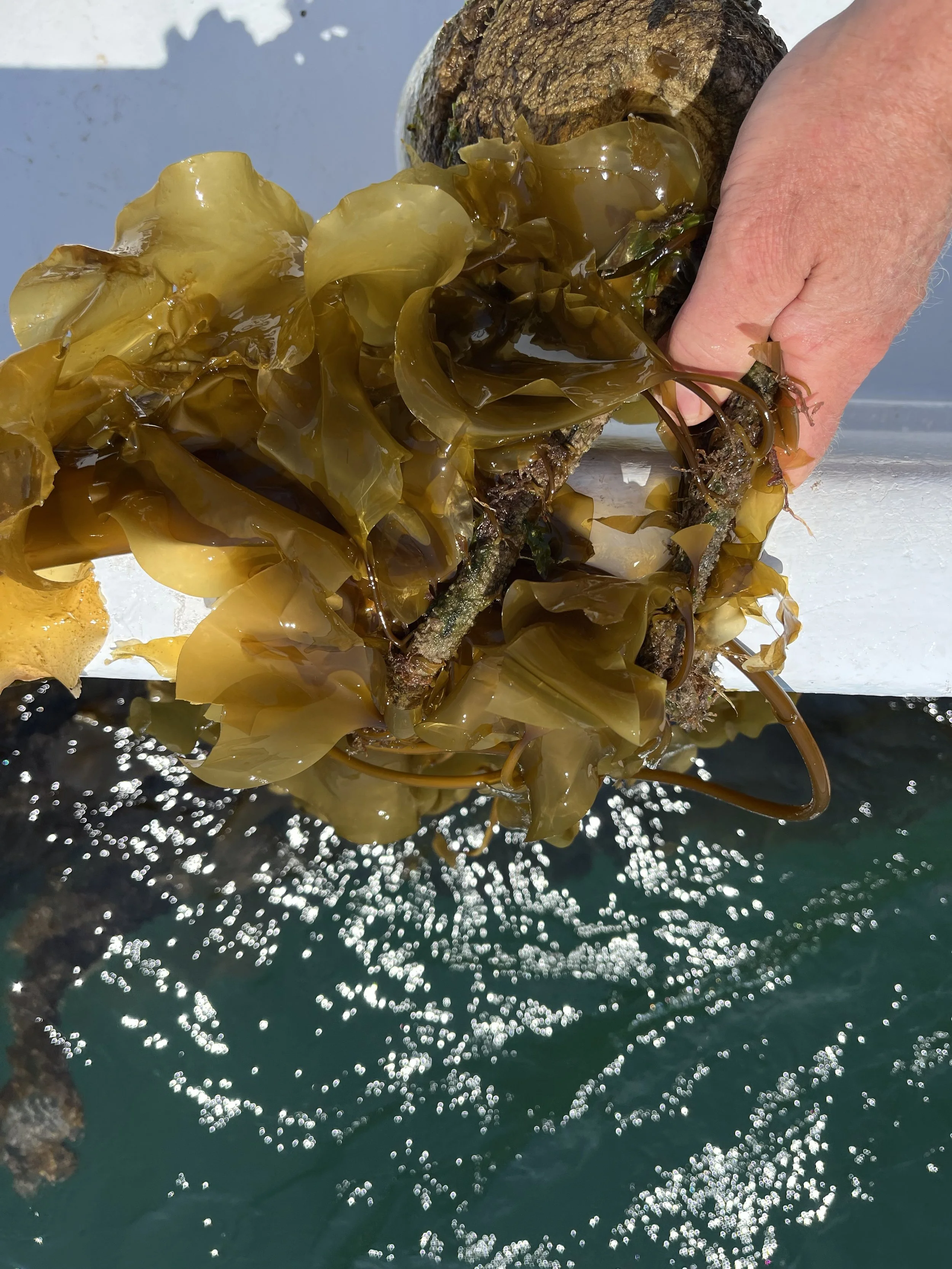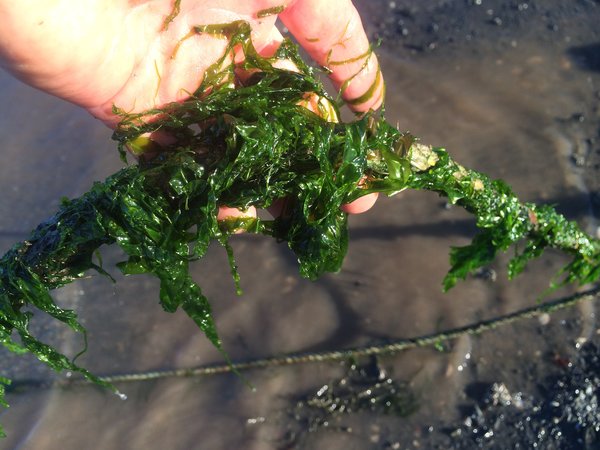Tidepool Tim says, “Knotted wrack is the MEGA - SEAWEED of the Maine coast! There are umpteen millions of tons of it sloshing back and forth along the rocks with each and every crashing wave, boat wake, and tidal current night and day. This rockweed forms a dense mat that keeps the beach cool and or warm as the tide goes out. A quick peek under this seaweed will reveal armies of belligerent green crabs, scattering scuds, and docile periwinkles awaiting the incoming tide. Some knotted wrack plants in our bay grow as long (tall) as 8' stretching up from their tiny suction-cup like holdfast on the rocks and reaching skyward to catch the energy of the sun. At high tide we can see schools of young herring (yum - sardines!) and various shrimp species swimming amongst the fronds. At low tide we slip and slide across this carpet to get down to the low water mark where we collect most of our sea life critters. During storms, large masses of knotted wrack are torn from their ledges and they float windward landing on beaches like huge windrows of hay - sometimes 1/2 mile long and 6' in diameter. As spring and summer heat up this mass of rockweed slowly rots down into the beach sediments and will disappear back into the sea!”



